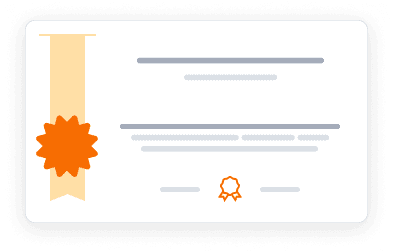Learn to connect Raspberry Pi with sensors, actuators, and online services using Python programming for IoT device development.
Learn to connect Raspberry Pi with sensors, actuators, and online services using Python programming for IoT device development.
This course cannot be purchased separately - to access the complete learning experience, graded assignments, and earn certificates, you'll need to enroll in the full An Introduction to Programming the Internet of Things (IOT) Specialization program. You can audit this specific course for free to explore the content, which includes access to course materials and lectures. This allows you to learn at your own pace without any financial commitment.
4.7
(1,591 ratings)
80,766 already enrolled
Instructors:
English
پښتو, বাংলা, اردو, 3 more
What you'll learn
Use network protocols to connect Raspberry Pi to the Internet
Program IoT devices using Python and public APIs
Interface with sensors, cameras, and servo motors
Implement client-server communication protocols
Develop hardware systems using expansion boards
Skills you'll gain
This course includes:
4.2 Hours PreRecorded video
4 quizzes
Access on Mobile, Tablet, Desktop
FullTime access
Shareable certificate
Get a Completion Certificate
Share your certificate with prospective employers and your professional network on LinkedIn.
Created by
Provided by

Top companies offer this course to their employees
Top companies provide this course to enhance their employees' skills, ensuring they excel in handling complex projects and drive organizational success.





There are 4 modules in this course
This comprehensive course teaches students how to interface Raspberry Pi with various input/output devices using protocols like HDMI, USB, and Ethernet. The curriculum covers essential networking concepts, API integration, and hardware interfacing techniques. Students learn to program sensors, cameras, servos, and other physical devices using Python, while understanding analog-to-digital signal conversion. The course emphasizes practical applications through hands-on projects and demonstrations.
Module 1
Module 1 · 3 Hours to complete
Module 2
Module 2 · 2 Hours to complete
Module 3
Module 3 · 2 Hours to complete
Module 4
Module 4 · 2 Hours to complete
Fee Structure
Instructor
Professor and Vice Chair of Undergraduate Education at UC Irvine
Dr. Ian G. Harris is a Professor and Vice Chair of Undergraduate Education in the Computer Science Department at the University of California, Irvine. He earned his Bachelor of Science degree in Computer Science from the Massachusetts Institute of Technology in 1990, followed by a Master’s and PhD in Computer Science from the University of California, San Diego in 1992 and 1997, respectively. Prior to joining UC Irvine, he was a faculty member in the Electrical and Computer Engineering Department at the University of Massachusetts Amherst from 1997 until 2003. His research interests encompass hardware design verification, security, and the application of natural language processing to security challenges.In addition to his teaching responsibilities, Dr. Harris actively participates in various program committees for leading conferences in his field, including the IEEE/ACM Design Automation Conference and the IEEE International Conference on Computer-Aided Design. He teaches several courses related to programming and embedded systems, such as "Getting Started with Go" and "Interfacing with the Arduino." Dr. Harris is committed to advancing education in computer science while contributing to critical research areas that enhance security and reliability in technology applications.
Testimonials
Testimonials and success stories are a testament to the quality of this program and its impact on your career and learning journey. Be the first to help others make an informed decision by sharing your review of the course.
Frequently asked questions
Below are some of the most commonly asked questions about this course. We aim to provide clear and concise answers to help you better understand the course content, structure, and any other relevant information. If you have any additional questions or if your question is not listed here, please don't hesitate to reach out to our support team for further assistance.



